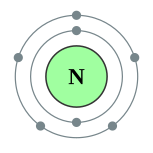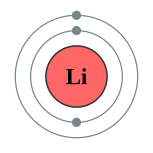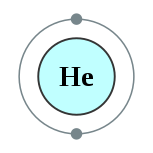Nitrogen
| General properties | |
|---|---|
| Name, symbol, number | nitrogen, N, 7 |
| Element category | nonmetal |
| Group, period, block | 15, 2, p |
| Standard atomic weight | 14.007(1) |
| Electron configuration | [He] 2s2 2p3 2, 5  |
| Discovery | Daniel Rutherford (1772) |
| Named by | Jean-Antoine Chaptal (1790) |
Nitrogen is a chemical element with symbol N and atomic number 7. Elemental nitrogen is a colorless, odorless, tasteless, and mostly inert diatomic gas at standard conditions, constituting 78.09% by volume of Earth's atmosphere. The element nitrogen was discovered as a separable component of air, by Scottish physician Daniel Rutherford, in 1772. It belongs to the pnictogen family.
Nitrogen is a common element in the universe, estimated at about seventh in total abundance in our galaxy and the Solar System. Its occurrence there is thought to be entirely due to synthesis by fusion from carbon and hydrogen in supernovas. Due to the volatility of elemental nitrogen and its common compounds with hydrogen and oxygen, nitrogen is far less common on the rocky planets of the inner Solar System, and it is a relatively rare element on Earth as a whole. However, as is the case on Earth, nitrogen and its compounds occur commonly as gases in the atmospheres of planets and moons that have atmospheres.
Many industrially important compounds, such as ammonia, nitric acid, organic nitrates (propellants and explosives), and cyanides, contain nitrogen. The extremely strong bond in elemental nitrogen dominates nitrogen chemistry, causing difficulty for both organisms and industry in breaking the bond to convert the N2 into useful compounds, but at the same time causing release of large amounts of often useful energy when the compounds burn, explode, or decay back into nitrogen gas.
Nitrogen occurs in all living organisms, primarily in amino acids and thus proteins and in the nucleic acids (DNA and RNA). The human body contains about 3% by weight of nitrogen, the fourth most abundant element after oxygen, carbon, and hydrogen. Nitrogen resides in the chemical structure of almost all neurotransmitters, and is a defining component of alkaloids, biological molecules produced as secondary metabolites by many organisms. The nitrogen cycle describes movement of the element from the air into the biosphere and organic compounds, then back into the atmosphere. Synthetically produced nitrates are key ingredients of industrial fertilizers, and key pollutants in causing the eutrophication of water systems.
Return to Periodic Table




